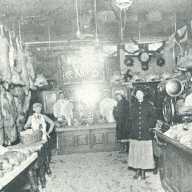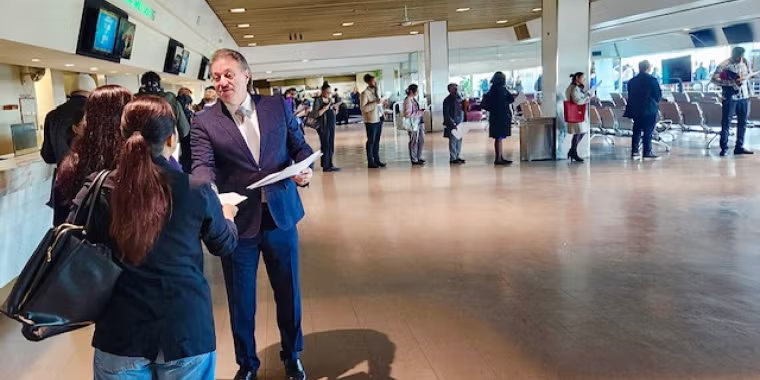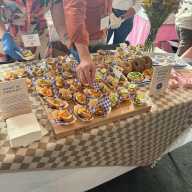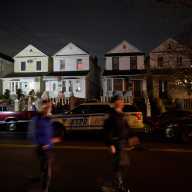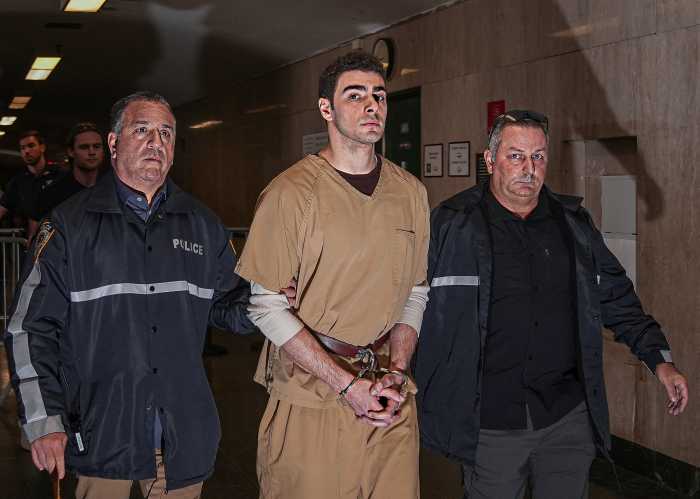A Jazz festival attended by some of the genres greatest trumpeted the opening of the Louis Armstrong House in Corona to the public, Wednesday.
The celebration in front of "Pops" home, 34-56 107th Street, where he and his fourth wife Lucille lived for 30 years, played from morning to the afternoon. Whether through words of praise or a melodious ditty, friends of the famous musician, Satchmo connoisseurs and elected officials paid tribute to the man known equally for his innovative trumpet playing and his exhuberant personality.
"When you leave this house, I know what youll think: what a wonderful man," said James Muyskens, president of Queens College, home of the Louis Armstrong Archives, which, aside from overseeing extensive collections of his memorabilia and records, curates and now leads tours at the musicians house.
When Lucille died in 1983, she willed the house to the Department of Cultural Affairs, which in turn leased the historical landmark to the college. After a $1.6 million renovation, helped largely by the Louis Armstrong Educational Foundation, Satchmos house, under the stewardship of the archives director Michael Cogswell, unfurled its welcome mats October 15.
Satchmo fans have the opportunity to experience the home life of a man who entertained thousands in Vegas, hobnobbed with US presidents, and caused the Belgian Congos civil war to cease so rival factions could attend his concert, yet chose to live in a blue-collar community, preferring his stoop and an audience of neighborhood kids to the reclusiveness of an estate in a wealthy suburb.
Neighbors who knew the Armstrongs said there were no pretensions about them. "I never realized he was a celebrity until he died," said 80-year-old lifetime resident of the block and the ArmstrongS immediate neighbor Selma Heraldo. "The Armstrongs were plain human beings."
After 20 years with no one living in the house, the national and city landmark remains almost exactly as the couple left it. Silver wallpaper chosen by Lucille decorates the interior, while the couples original 1950s-style kitchen at the time, a touchstone of culinary innovation remains intact, as do the myriad mirrors adorning the walls of the bathroom. In each room, speakers playing conversations that Armstrong recorded of guests and his wife give insight into his jovial home life.
In the back of the house, a garden with a wet bar for entertaining amazingly transports a tour taker to a serene sanctuary, muffling the hustle and bustle of the neighborhood. The yard is used for occasional jazz concerts for local schools; and, for those wishing a marital blessing from the Armstrongs, it may soon be used for wedding receptions.
The houses basement holds a gift shop where fans can buy memorabilia, and taste Armstrongs gastronomic choice red beans and rice. The basement also holds an exhibit of Satchmos more interesting tales and possessions. Though it changes every few months, currently tour takers will see an FBI dossier on Armstrong, whose vociferous support of civil rights in the 1950s and 1960s led the federal agency, worried about the musicians rabblerousing effect, to profile him.
Another exhibit displays a tribal drum that was given to Armstrong during a 1960 tour of Africa. Another showcases a lip salve brand with his name and face on the lid. When the company asked him to endorse the product, he didnt want royalties, merely a lifetime supply of the ointment.
"Enjoy him, hes delicious," the crowd at the festival was told by Phoebe Jacobs, vice-president of the Louis Armstrong Educational Foundation, who got to know Satchmo and his wife well, while an assistant to his manager, Joe Glaser. "And dont let anybody tell you hes dead, because hes not."
The musical celebration began with famed trumpeter Jon Faddis, atop the Armstrong Houses balcony, tooting the introduction of West End Blues, then being joined from across the street by the Gully Low Jazz Band.
Faddis, who attributes his desire to play the trumpet to Pops, organized the events all-star musical ensemble the equivalent of a whos who in jazz history.
Summing up Armstrongs influence on the art form, Faddis recalled the praise of another famous musician, "Miles Davis once said, You cant play anything on the trumpet, even modern music, that did not come from Louis Armstrong."
A few jazz greats who also called Corona their home at one point, saxophonist Jimmy Heath and trumpeter Clark Terry, made an appearance at the event. They reminisced about their times at Satchmos house and his notoriety in the neighborhood.
"Pops would pass out dollar bills to the children in the street," said octogenarian Terry, who used to live on 110th Street in Corona. "He was a pied piper when he would go through the block."










